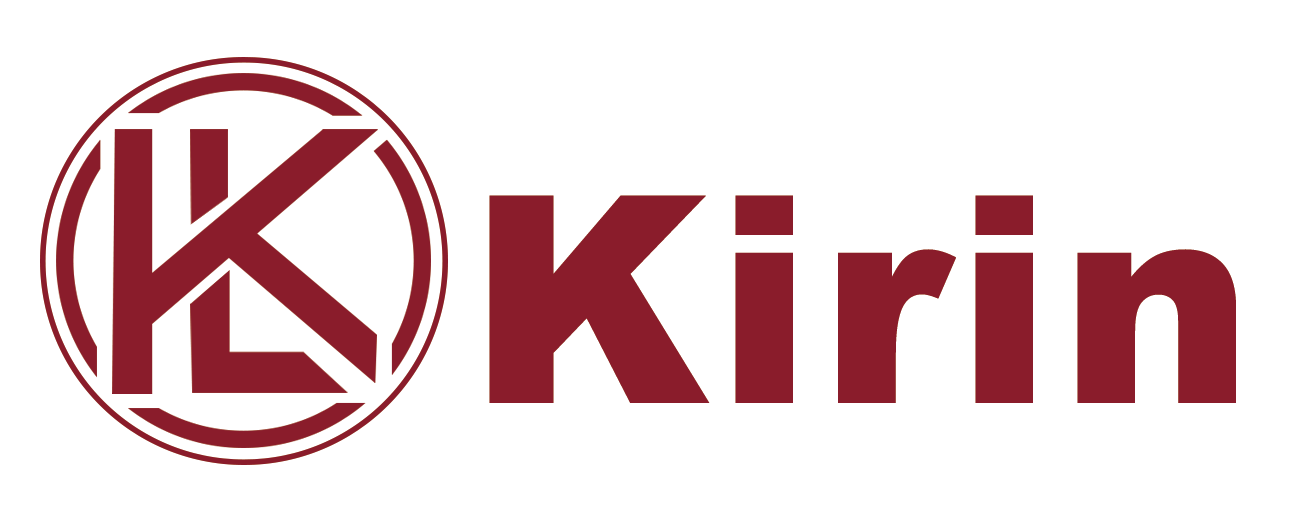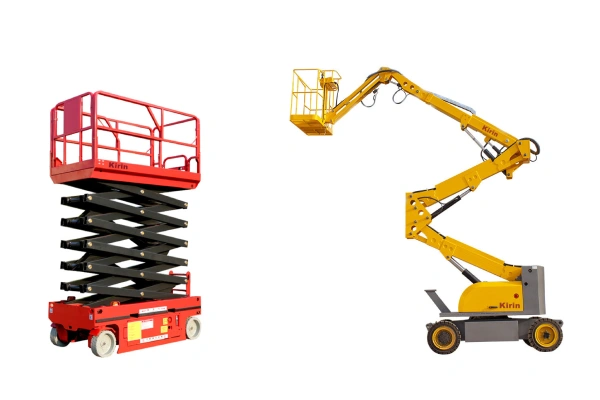Boom lifts, also known as aerial work platforms or man lifts, are indispensable tools in construction, maintenance, and various other industries. They provide a safe and efficient way to elevate workers and equipment to great heights. While many jobs require a standard boom lift, some projects, like skyscraper construction, bridge inspection, or wind turbine maintenance, demand a specialized machine with an impressive reach. This guide delves into the world of these giants, exploring the tallest boom lift models and the technology that makes them possible.
Exploring the World of Aerial Work Platforms
Aerial work platforms (AWPs) come in various forms, each designed for specific tasks. The most common types include scissor lifts, which move vertically; mast booms, which are compact and offer vertical movement with some horizontal reach; and the focus of this guide, boom lifts, which use a hydraulic arm to extend both vertically and horizontally. The term “boom lift” itself is a broad category, encompassing both telescopic and articulating models. The tallest boom lift will almost always be a telescopic model due to the nature of its design.
The choice of lift depends on several factors, including the required working height, horizontal reach, and the presence of obstacles. For instance, an articulating boom lift is ideal for navigating around structures, while a telescopic boom lift is the best choice for jobs requiring maximum vertical and horizontal extension in a straight line.
The Tallest Telescopic Boom Lifts
The tallest boom lift models are typically telescopic lifts. These machines feature a straight, extendable boom that can reach incredible heights, making them the workhorse of high-rise construction and other super-tall applications.
As of 2025, the Zoomlion ZT82J holds the title of the world’s tallest self-propelled boom lift. With a working height of approximately 84.3 meters (~276.5 feet), it surpasses previous record holders. The ZT82J, released in 2024, is a diesel-powered machine engineered for stability and control. It’s a prime example of the ongoing race to build the tallest boom lift for the most demanding jobs.
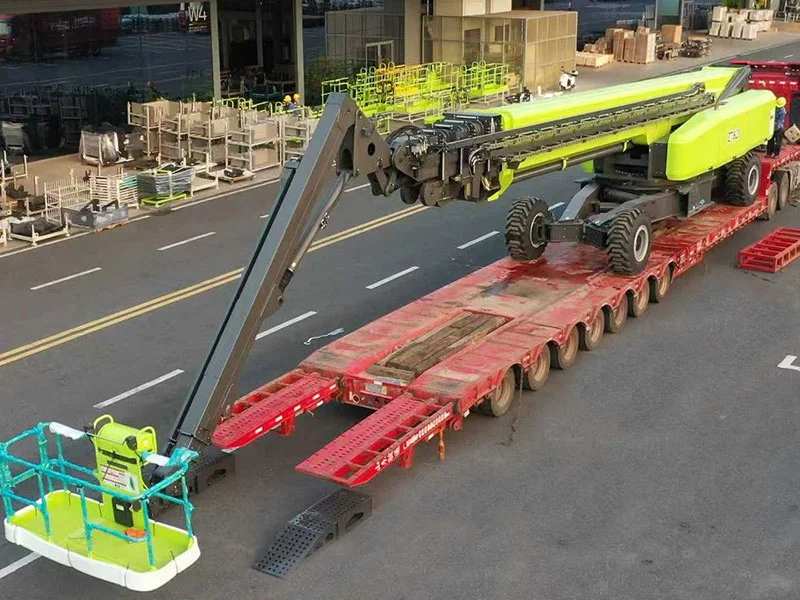
Other notable tallest boom lift models in the telescopic category include:
- Snorkel 2100SJ: This machine has a working height of 66 meters (~216.5 feet). It’s known for its versatility and five steering modes, including an optional extendable chassis for enhanced stability.
- Sinoboom TB58RJ Plus: As Sinoboom’s tallest telescopic lift, it offers a working height of 59.9 meters (~196.5 feet) and is built for tough, rugged job sites.
- JLG 1850SJ Ultra Boom: With a working height of 58.6 meters (~192.2 feet), the 1850SJ is a well-known name in the high-reach market. It’s designed for fast operation, allowing operators to get to full height quickly.
- Genie SX-180: This lift offers a working height of 56.9 meters (~186.6 feet) and is commonly used in industrial maintenance and bridge inspections. Its Genie X-Chassis system provides stability on the job.
These towering machines are a testament to engineering innovation, constantly pushing the boundaries of what’s possible in vertical access. The sheer scale of a tallest boom lift is impressive, and the technology behind them is a combination of powerful hydraulics, precision controls, and advanced safety features.
The Tallest Articulating Boom Lifts
While telescopic lifts dominate the high-reach market, articulating boom lifts are crucial for jobs that require navigating around obstacles. These lifts have a “knuckle boom” or multiple jointed sections that allow them to reach up, over, and out, making them highly flexible.
When it comes to the tallest boom lift in the articulating category, the Bronto Skylift F-HLA series stands out, with some models reaching an impressive 112 meters (~367 feet) in height. While these are often truck-mounted platforms designed for fire and rescue, their design showcases the potential of articulating booms. A more common example on construction sites is the Genie ZX-135/70, with a working height of 43.15 meters (~141.5 feet), which provides excellent up-and-over reach.
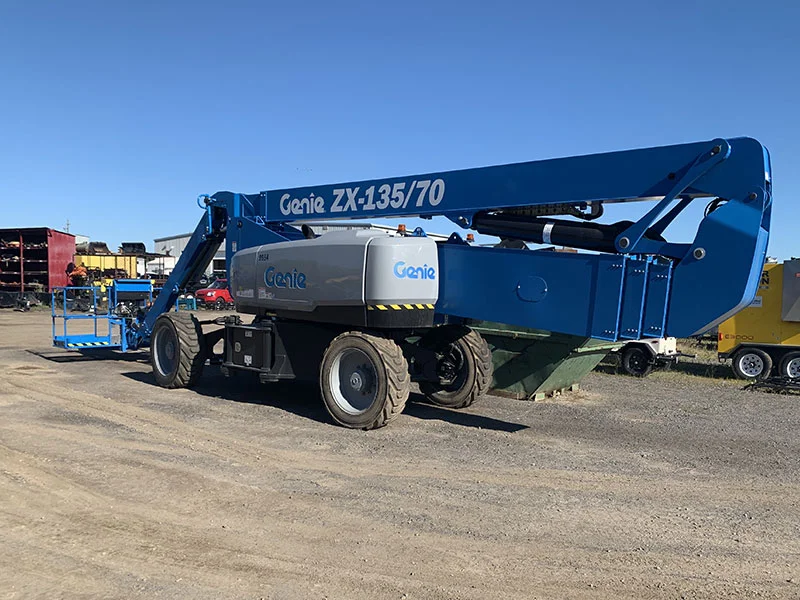
The unique design of an articulating lift allows it to access areas that a straight telescopic boom cannot. For example, a worker can go up and over a building’s parapet to access a lower facade or reach an elevated work area while maneuvering around a power line. This flexibility, while not offering the same extreme heights as the tallest boom lift models, is invaluable on complex jobsites.
Maximizing Reach and Efficiency: Telescopic Jib Extensions
Telescopic jib extensions are a key feature that enhances the functionality of a tallest boom lift. A jib is a short, secondary boom attached to the end of the main boom. It can rotate and extend independently, providing an additional range of motion and the ability to precisely position the work platform.
This is particularly useful when working in tight spaces or on structures with complex geometries. The jib allows the operator to get the platform into the exact position needed, even if the main boom’s path is obstructed. For example, a jib can be used to reach into an open-air stadium or over a rooftop. The use of a jib maximizes a boom lift’s efficiency and allows it to access a wider range of work areas from a single position.
Safety First: Operating the Tallest Man Lifts
Safety is paramount when operating any aerial lift, and this is even more critical when dealing with the tallest boom lift models. Operators must undergo specialized training and certification to ensure they understand the equipment’s unique characteristics and the potential hazards involved. Key safety considerations include:
- Pre-Operation Inspection: A thorough inspection of the lift is required before each use. This includes checking fluid levels, tire pressure, controls, and all safety systems. Any faults must be addressed before the machine is operated.
- Site Assessment: The work area must be assessed for hazards, including unstable surfaces, uneven terrain, overhead obstructions like power lines, and ground obstructions. A boom lift should only be operated on level ground and in calm weather conditions.
- Fall Protection: Operators must always wear a full-body harness with a short lanyard attached to the designated tie-off point in the basket. This is not for fall arrest but for “body restraint” to prevent the operator from being ejected from the platform if there is a sudden movement.
- Weight Capacity: It is crucial to adhere to the lift’s weight capacity, including the weight of the operator, tools, and materials. Overloading the platform can cause the lift to become unstable and tip over, a major risk with any tallest boom lift.
- Emergency Controls: Operators must be familiar with all emergency controls, including the ground controls that can be used to lower the platform in case of a power failure or other issue.
Adhering to these safety standards is essential to protect the operator, other workers, and the integrity of the work site.
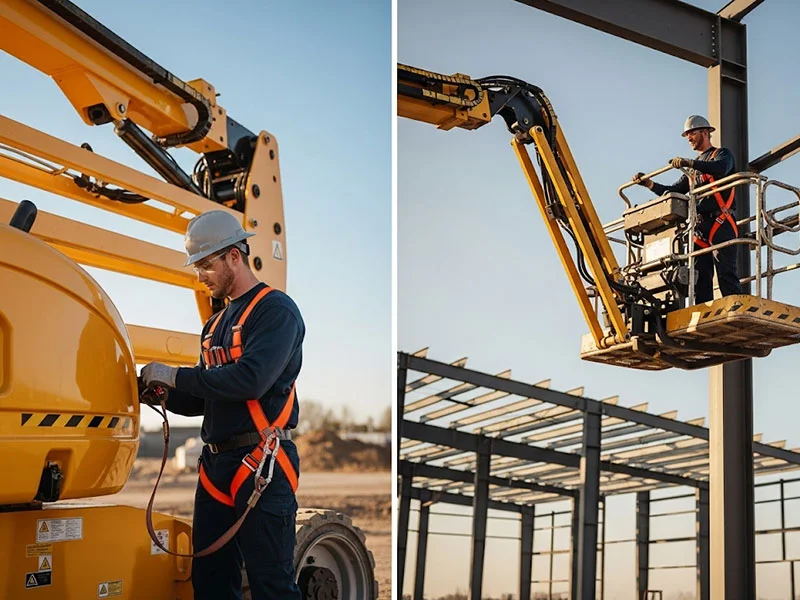
Choosing the Right Lift for the Job
Selecting the appropriate aerial work platform is a crucial decision that impacts efficiency, safety, and cost. Here are the key questions to ask when choosing between lifts, particularly when considering a tallest boom lift for a specific project:
- Required Working Height and Horizontal Reach: This is the most critical factor. Determine the maximum height and outreach needed to complete the job. If the job is on a skyscraper, a tallest boom lift is the clear choice.
- Work Environment: Is the job indoors or outdoors? Are there any tight spaces or obstacles to navigate?
- Terrain: What is the condition of the ground? Rough terrain may require a machine with four-wheel drive and oscillating axles.
- Load Capacity: How many people and how much equipment will be lifted? Make sure the lift can handle the combined weight.
- Power Source: Will a diesel, electric, or hybrid lift be more suitable? Electric lifts are quiet and emit no fumes, making them perfect for indoor use, while diesel lifts are more powerful and better suited for outdoor applications.
By carefully considering these factors, you can ensure you select the right machine, from a simple articulating lift to the tallest boom lift, to get the job done safely and efficiently.
Electric Boom Lifts: The Future of High-Reach Equipment
The industry is seeing a growing trend towards electric-powered aerial work platforms, and this includes high-reach models. Electric boom lifts offer several benefits that are changing the way jobsites operate. The tallest boom lift models may still be diesel-powered, but electric technology is rapidly advancing.
One of the primary advantages of electric lifts is their zero-emission operation, making them ideal for indoor use or in areas with strict environmental regulations. They are also much quieter than their diesel counterparts, reducing noise pollution on the job site. Furthermore, advancements in battery technology are providing longer run times and faster charging, making them a more viable option for longer projects. The push for sustainability and stricter regulations on emissions are driving this shift, and it’s likely that the future will see a fully electric tallest boom lift.
Conclusion
From the impressive Zoomlion ZT82J to the flexible articulating lifts, the world of aerial work platforms is constantly evolving. The development of a tallest boom lift pushes the boundaries of engineering and provides solutions for the most challenging high-reach projects. As technology advances, we can expect to see even taller, more efficient, and more sustainable machines that continue to revolutionize how we work at great heights.
What is the current record for the tallest boom lift?
The current record holder for the tallest self-propelled boom lift is the Zoomlion ZT82J, with a working height of approximately 84.3 meters.
What is the difference between a telescopic and articulating boom lift?
A telescopic boom lift has a straight, extendable arm, ideal for jobs that require maximum height and horizontal reach in a straight line. An articulating boom lift has a jointed arm, allowing it to navigate up, over, and around obstacles.
Are electric boom lifts as powerful as diesel ones?
While diesel lifts have traditionally been more powerful, electric boom lift technology is rapidly advancing. Newer models are offering improved performance, longer battery life, and the ability to handle a wider range of tasks, particularly in the lower to mid-range height classes.
Is it required to wear a harness in a boom lift?
Yes. OSHA standards require that all operators in a boom lift wear a full-body harness and a lanyard attached to the designated tie-off point. This is for body restraint to prevent ejection from the platform, not for fall arrest.
What are the main applications for the tallest boom lift models?
The tallest boom lift models are typically used for large-scale projects, including high-rise construction, wind turbine maintenance, stadium construction, and bridge inspections.
